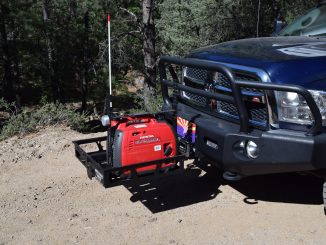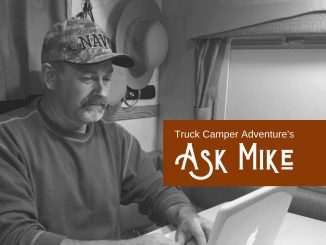
When it comes right down to it, the pickup truck is built to really do one thing—haul cargo. It’s the raison d’etre. Yes, some people use them to tow, but hauling cargo is what pickup trucks were built primarily to do. The ability to haul cargo is measured by a truck’s payload rating, which tells you how much weight you can safely haul without damaging your pickup truck or making you unsafe. The problem is that the payload rating for some trucks is limited. You can never have enough. One question we often get asked and see all the time on the forums is if there’s anyway to increase it? That’s a great question and one we’ll examine in this article. We’ll also take some time debunk the big myth about the subject.
First, let’s take a look at how a truck’s payload rating is determined. Truck manufacturers typically employ a simple formula by taking a truck’s Gross Vehicle Weight Rating (GVWR) and subtracting the truck’s curb weight from that figure. For example, let’s say the GVWR of a one-ton truck is 12,000 pounds and the curb weight of the truck is 8,000 pounds. Subtracting the curb weight of the truck (8,000 pounds) from the GVWR (12,000 pounds) nets a figure of 4,000 pounds. This is the truck’s official payload rating. The payload rating for your truck can be found on a placard located on the driver side door jamb and on a payload certification form found in your truck’s glove box. The payload includes not only the amount of weight that can be put in the bed of your truck, but also includes the weight of the passengers and gear you may be carrying in the cab. It all counts.

If you need a large payload to haul something like a truck camper then you need to take a hard look at options before you buy a truck. Yes, having a shiny, new diesel engine underneath that hood is great for climbing mountains and raising your testosterone, but consider how much more weight that will place on your truck’s frame and how much having it will reduce your truck’s payload. For instance, the 6.7L Ford Power Stroke diesel weighs 990 pounds compared to Ford’s 6.2L V8 gas engine, which weighs nearly half that at 580 pounds. And if you’re considering getting 4WD, think again. That feature, while great for driving on rough roads, sand, and snow, isn’t so great for your payload rating—the typical 4WD drivetrain is 400 pounds heavier than a 2WD. The same applies to other nice-to-have options and aftermarket accessories. Things like a crew cab, a Buckstop bumper with a winch, a Bowen Customs truck bed, and Torklift Super Hitch add capability, but may also add weight and reduce payload. Research beforehand.
How to Raise the Payload Rating of a Truck
So how can you boost the payload rating of your truck? How can you increase it? The most obvious way is to remove items from your truck like the tailgate (these typically weigh around 60 pounds), the rear seat (that’s another 60 to 70 pounds), swapping out the OEM steel wheels for aluminum rims, etc. Removing items from your truck will increase payload, but you can only go so far in removing things before you’re left with a bare-bones truck. In spite of removing such items, however, the certified payload rating set by the manufacturer won’t change, at least not officially. The rating exists for safety because if you exceed it, components will eventually wear out and break. These components include things like the truck’s frame, the axles, the leaf springs, the brakes, and the wheels and tires. And while some shops claim they can increase your payload, only certified coach builders and truck manufacturers can certify or re-certify the payload rating of their trucks.

While we discourage exceeding the GVWR/payload rating of your truck, there is one little-known trick employed by more knowledgeable pickup truck owner’s to squeeze out even more cargo hauling capability out of their trucks. This involves the gross axle weight ratings (GAWRs) of each truck. The GAWRs listed on each truck’s payload sticker are greatly limited by the OEM wheel and tires. If you research the actual GAWRs with the axle manufacturer you’ll probably be surprised to learn that you have several hundreds, if not thousands, of additional pounds of cargo carrying capacity (this is especially true with the AAM 11.5 rear axle found on Ram 3500 trucks, which has a 10,000-pound GAWR rating, 3,000 pounds more than the GAWR given by FCA). You can tap into this additional cargo carrying capacity by simply buying better wheels and tires with higher load ratings. For example, some aftermarket 10 ply, load range E tires offer a 4,080-pound weight capacity, while others offer an acceptable 3,640-pound capacity.


In spite of the payload limitations of some trucks, there are some other things that you can do to make your truck ride and handle better. Better wheels and tires with higher load ranges, an additional leaf spring, Torklift Stableloads, Timbrens, air bags, better shock absorbers, and a Hellwig Big Wig rear sway-bar are all great improvements, depending on your situation. But there’s always a catch with suspension modifications like these. Adding them may improve the performance and ride of your truck, but they may also reduce the payload of your truck and may make the ride of your truck much harsher when unloaded. In life there’s always some give and take, this includes any suspension upgrades made to your truck.
In order to accurately assess where you stand when it comes to payload, you should take your fully loaded truck and camper to a local Certified Automated Truck (CAT) Scale. Three figures are provided each time you have your truck and camper weighed: the two axle weights plus the total weight of the rig. Owners should take their truck to the scale first without the camper, then have their truck and camper weighed together later to determine the actual weight of each. Be mindful to duplicate important fluid levels like fresh water and diesel/gas when obtaining these numbers. That way, you’ll get an accurate picture where you stand with respect to not only the GVWR, but also to the front and rear GAWRs for your truck. Like most truck camper owners, you’ll probably be surprised at the results. Most truck camper owners are overweight.

Final Thoughts
So what’s the bottom line? If you find that you still need more payload and you aren’t comfortable driving the truck you have, sell it and buy the truck you should have bought to begin with. For those who own hard-side truck campers, that usually means getting a one-ton pickup truck like a Ford F-350, a Chevy 3500, or a Ram 3500 (a Class 4 or Class 5 truck like a Ram 4500 or a Ford F-550 nets even more payload). Depending on cab configuration, engine type, bed length, and rear axle configuration (DRW or SRW), a 2024 one-ton truck can net you a payload anywhere between 4,000 and 7,800 pounds. Going this route may cost you a little more, but in the long run will save you money, anxiety, and regret.

















Hi Folks, I appreciate the posts on payload ! Im about to purchase a 2006 Lance 1181max
at 4,000lbs dry and put it on my 2015 Ram 3500/4WD/CrewCab/Dual RearWheel truck
with a payload of 5,772lbs. The numbers work w 800lbs of gear, yet seeking comments on suspension upgrades: Shocks+ Leaf Springs+ BigWig Rear Sway Bar + Spacers (timbren Or Sumo, OrTorque lifts, Or…..Would appreciate the best combo of upgrades
for this rig. Headed to Alaska in summer 2025 ! Note: Im wearing 245-75-17 AT tires/10ply. Thanks ! JoeBear
Bottom line… get enough truck for the load you are going to haul!
Too many people already have a truck when they decide to get a truck camper and instead of fitting a camper to the truck they already have, they buy the camper they want and try to make it fit the truck.
In my experience a lot of the dealers are culpable in allowing this to happen as they want to sell a camper and will gladly send it out the door fully aware the rig is overweight.
What is the simplest way to get the weight ratings of your wheels, axles, and springs so that you can determine the weakest component and make smarter choice about making changes that might actually increase your GVWR/GAWR, (even if it does not change the numbers on your door jamb.) Thanks.
I’m glad that you Post and Re-Post this article every once in a while. I have had occasion to discuss payload with some of the truck campers I meet and they are sometimes surprised and dismayed that there are actual weight limitations for their trucks and campers. This Post does a lot to clarify the issue. Thank you.